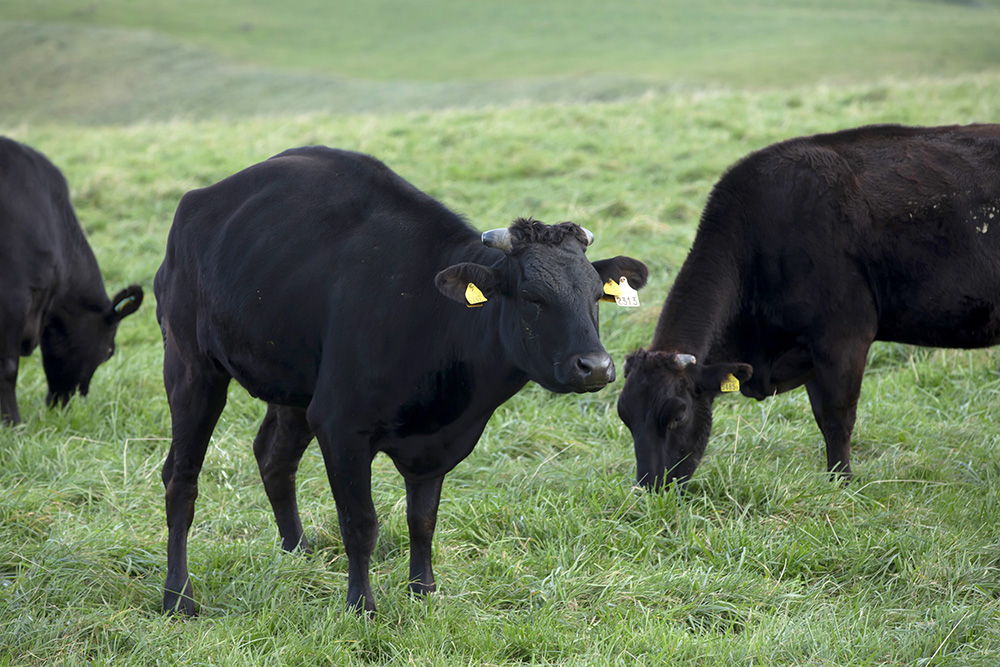Experience at first hand the unique nature (topography) of the Soya Hills.

The Soya Hills to the south of Cape Soya is Japan's northernmost hilly terrain.
The gentle undulations and unique topography of this expansive green land were formed during the Ice Age,
and a subsequent bush fire during the Meiji Period destroyed the forest, exposing its beautiful appearance.
The hills include farms where beef cattle graze on pastures rich in minerals from the sea winds,
nd Japan's largest-scale renewable-energy-generating wind farm,
creating a sustainable environment and unique landscapes.
Beautiful land created by the Ice Age
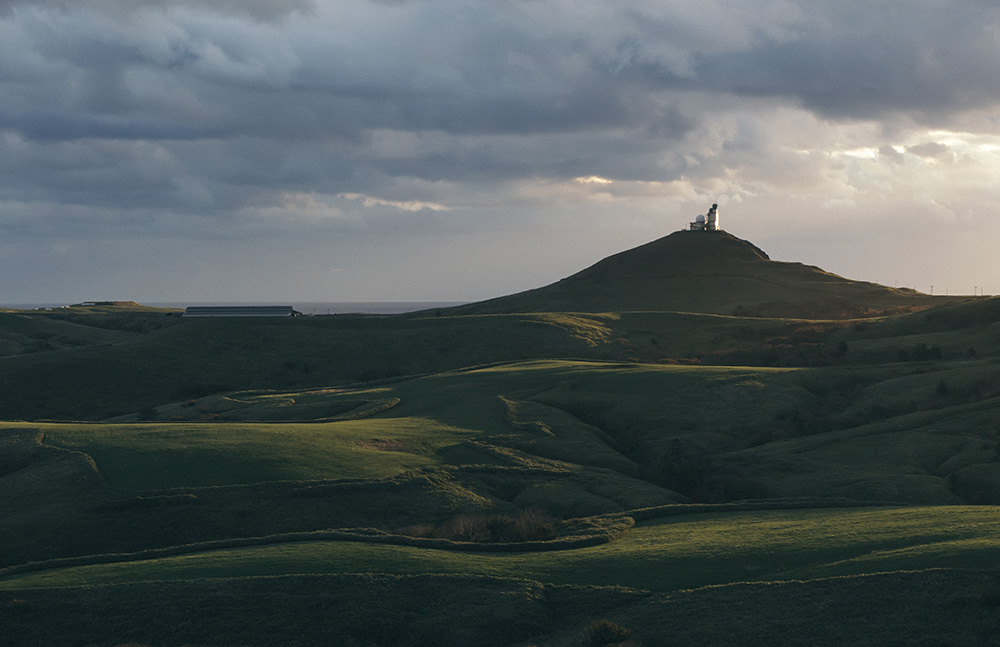
The undulating topography of the Soya Hills was created between 10 and 20 thousand years ago.
Known as a “periglacial landform,
” the land was shaped by the repeated freezing and thawing of the soil during “Wurm Glaciation,
” the Earth’s last glacial period, and is a designated Hokkaido Heritage.
Similar topography can be seen in other parts of Hokkaido but the Soya Hills biggest difference is in its appearance.
Until the middle of the Meiji Period, the Soya Hills were covered in dense forests. However,
a series of bush fires exposed the terrain.
Subsequent strong winds and low temperatures on the hills meant that only low vegetation grew,
and this type of distinctive landscape remains today.
The undulating topography of the Soya Hills was created between 10 and 20 thousand years ago. Known as a “periglacial landform,” the land was shaped by the repeated freezing and thawing of the soil during “Wurm Glaciation,” the Earth’s last glacial period, and is a designated Hokkaido Heritage. Similar topography can be seen in other parts of Hokkaido but the Soya Hills biggest difference is in its appearance. Until the middle of the Meiji Period, the Soya Hills were covered in dense forests. However, a series of bush fires exposed the terrain. Subsequent strong winds and low temperatures on the hills meant that only low vegetation grew, and this type of distinctive landscape remains today.
Pastures that nurture brand beef
Located on the hills is Soya Misaki Farm, which utilizes over 2,000 hectares of the land as pastures.
Black-haired wagyu beef and Holstein are bred there,
and the cattle strolling among the pastures at grazing times make for idyllic scenery.
Soya black-haired cattle,
raised stress-free on grass rich in minerals carried by the sea winds boast high-quality beef,
which is a certified “Wakkanai brand” with rich-tasting red meat and light fat.
Located on the hills is Soya Misaki Farm, which utilizes over 2,000 hectares of the land as pastures. Black-haired wagyu beef and Holstein are bred there, and the cattle strolling among the pastures at grazing times make for idyllic scenery. Soya black-haired cattle, raised stress-free on grass rich in minerals carried by the sea winds boast high-quality beef, which is a certified “Wakkanai brand” with rich-tasting red meat and light fat.
Original landscapes with windmills turning
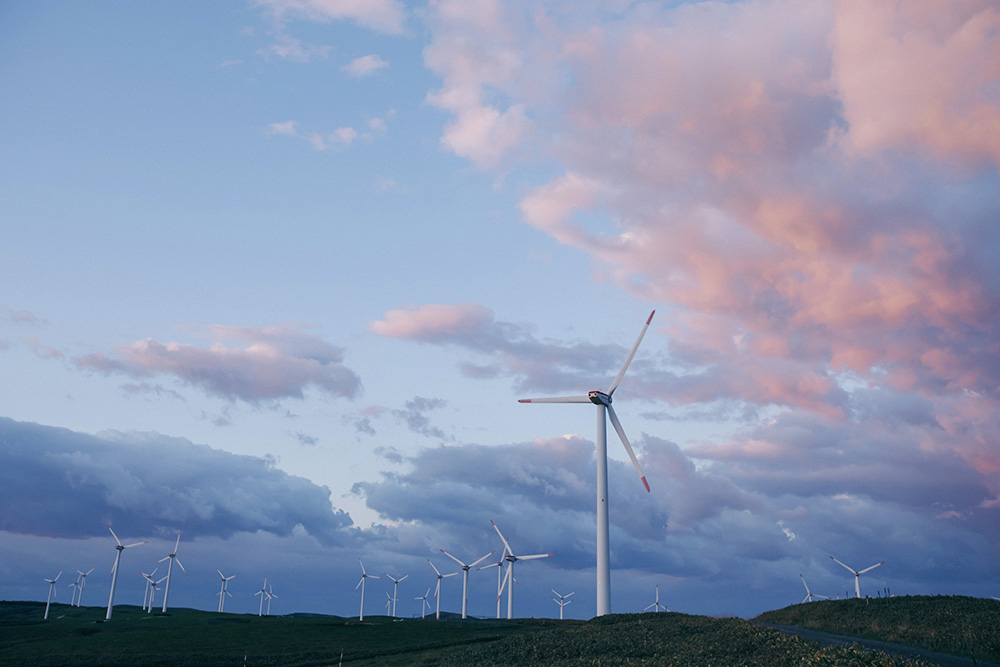
The Cape Soya area is one in which the average wind speed exceeds 7.5 m/s throughout the year,
and the Soya Hills are home to the Cape Soya Wind Farm,
which utilizes that wind as renewable energy.
The wind farm is one of the countries largest-scale wind power-generating facilities,
which boasts a total output of 57,000 kWh – approximately
60% of the annual power consumption of the city of Wakkanai.
The large rotating blades of the 57 windmills dotted along
on the ridges are one of the focal points of the Soya Hills’ scenery.
A sightseeing bus is a convenient way of touring around the Soya Hills but a footpath course is also available,
and enjoying the scenery while walking is also recommended.
The Cape Soya area is one in which the average wind speed exceeds 7.5 m/s throughout the year, and the Soya Hills are home to the Cape Soya Wind Farm, which utilizes that wind as renewable energy. The wind farm is one of the countries largest-scale wind power-generating facilities, which boasts a total output of 57,000 kWh – approximately 60% of the annual power consumption of the city of Wakkanai. The large rotating blades of the 57 windmills dotted along on the ridges are one of the focal points of the Soya Hills’ scenery. A sightseeing bus is a convenient way of touring around the Soya Hills but a footpath course is also available, and enjoying the scenery while walking is also recommended.
- TOPICS
- The periglacial landform of the Soya Hills The gentle wave-like terrain, formed approximately 10,000 years ago by the repeated freezing and thawing of the soil, was designated as a Hokkaido Heritage in 2004.
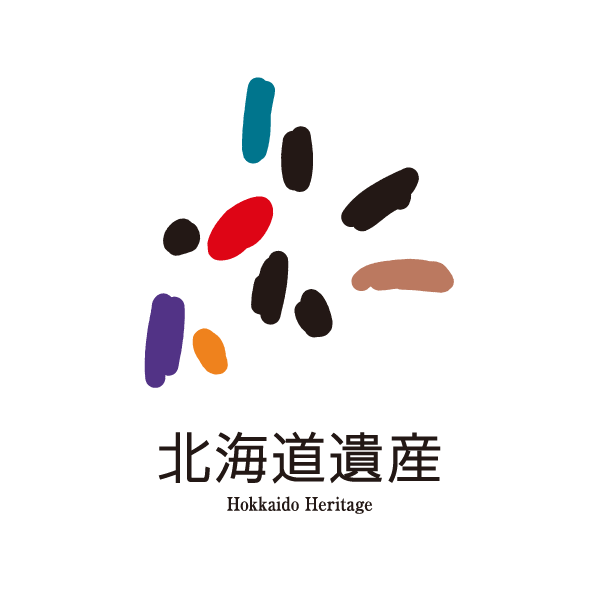
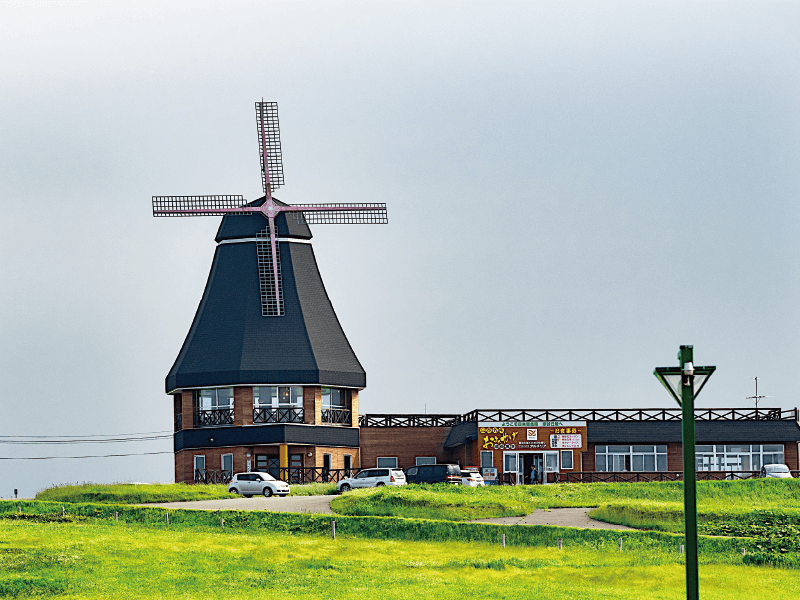
A rest at Almelia, the Soya Hills observatory and resthouse facility where you can savor Soya Black-haired Wagyu Beef, is recommended.
- A Soya Hills observatory and resthouse facility (Guesthouse Almelia)
-
- Approx. 45 min by car from JR Wakkanai Sta.
- Approx. 15-min. walk from Cape Soya
◎ Open 9:00–17:00 from Apr. 29 to Nov. 3
(Until 19:00 from June to Sept.)
